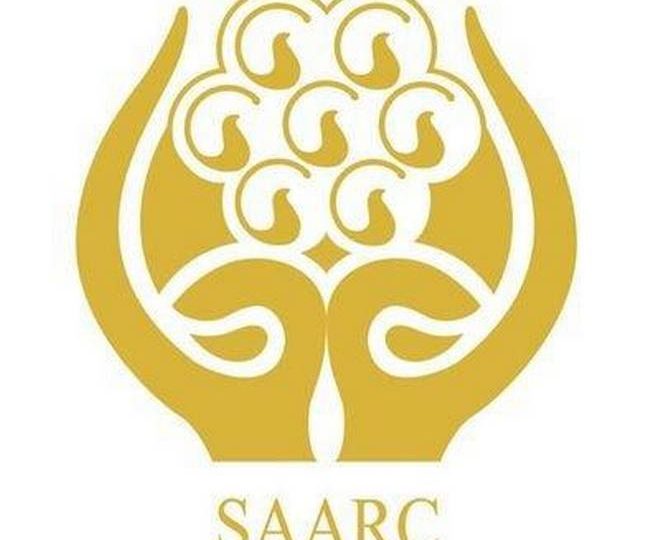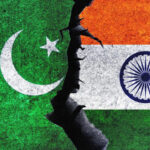Going by government data, assistance fell from ₹5,928.6 crore for 2013-14 to ₹3,483.6 crore for 2017-18; but Maldives has been an outlier, despite the dip in ties
India’s financial assistance to SAARC neighbours declined considerably in the past five years, a reply by the government in Parliament this week showed.
The startling figures were revealed in the Lok Sabha in answer to a question whether India had completed projects committed to countries in the neighbourhood. Minister of State for External Affairs V.K. Singh submitted a chart of India’s grant assistance (GA), or projects financed through a grant, to neighbouring countries. According to the figures, the GA actually fell from ₹5,928.6 crore for 2013-14 to ₹3,483.6 crore for 2017-18 for Afghanistan, Bangladesh, Bhutan, the Maldives, Nepal and Sri Lanka combined.
Significantly, the drop for most SAARC countries was most steep in 2014, the year the NDA government launched its tenure with the “Neighbourhood First” slogan. The one exception was the Maldives, to which Indian assistance has been consistently increasing year on year since 2013, despite the dip in bilateral ties. The Maldives is the only country of the grouping that Prime Minister Narendra Modi has not yet visited, and despite rising tensions between New Delhi and Male over the conduct of elections this year and the crackdown on the Opposition parties by President Abdulla Yameen, Indian largesse appears to have increased ten-fold to the islands: from ₹9.67 crore in 2013-14 to ₹109.24 crore.
When contacted, the External Affairs Ministry declined to make any formal comment. In its reply in Parliament, the Ministry had said: “An assessment of fund requirement is made before each financial year, based on the progress in execution aligned with project implementation cycle. Time lines fixed for projects vary, and are determined based on consultations with host governments and ground situation.”
However, officials gave a number of explanations for the downtrend. “Our commitment to the neighbourhood has never been as strong,” said an Indian diplomat now serving in the region, explaining that the GA figures did not include the lines of credit extended to Nepal, Sri Lanka and Bangladesh. These lines of credit are given at the minimal interest rates of 1-2%, the official explained, compared with loans offered by China at 6-7%.
Another South Block official strongly denied the contention that the declining figures showed a flagging interest in the government’s neighbourhood policy. The official said financial assistance had a “cyclical” nature, and the GA figures for 2018-19 were expected to be higher for each of the countries involved. The GA for Nepal in 2017-18 was ₹303.26 crore, for instance, and was expected to rise this year to ₹650 crore, provided the government in Kathmandu was able to absorb the additional aid, he added.
“These [trends] are mainly related to project cycles,” concurred the former Ambassador to Afghanistan Amar Sinha, who was also Secretary (Economic Relations) before he retired. “Both our major projects — the Salma dam and the Afghanistan Parliament — were done and handed over [in this period]. So there is a natural tapering until we undertake the next major project.”
When asked, officials conceded that one of the major reasons for the decline was that many projects had been completed in the neighbourhood, and there were fewer projects started in the period since 2014.
In Afghanistan, India has shifted to work on small development projects (SDPs) rather than the ambitious highways, dams and big building projects that were started in 2008-09. In Bangladesh, the main grant for land acquisition for the Akhaura-Agartala rail “last link” project has now been completed. In Bhutan, which has always received the largest share of Indian assistance, the assistance required for major hydroelectric power plants like Punatsanghchu 1 and 2 and Mangdechu has been disbursed 75-90%, said officials, while Indian assistance to Bhutan’s 11th five-year plan (2013-2017) has been handed over nearly fully. In Sri Lanka, the decline was explained by delays in land acquisition for 15,000 homes to be built by India in the plantation areas, though the work on 45,000 homes in the north and east of the island has been completed.
India is still completing three main projects in Maldives: a police academy, a coastal radar project, and the refit of MNDF ship Huravee. An offer to build a new Defence Ministry building is pending, which explains why the Maldives alone is the outlier to an otherwise declining trend in neighbourhood aid.






NO COMMENT